1. Acne Vulgaris

Acne vulgaris is the medical name for common acne -- the presence of blackheads, whiteheads, and other types of pimples on the skin. The most common spots for breakouts are the face, chest, shoulders, and back. Although mild acne may improve with over-the-counter treatments, more severe forms should be treated by a dermatologist.
2. Comedones
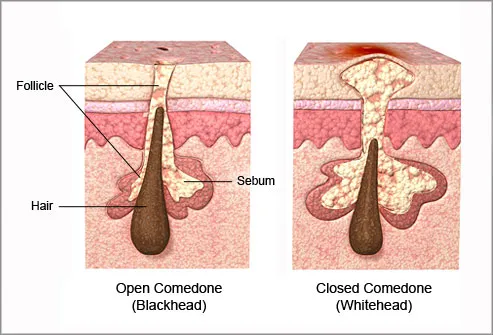
A comedo, or basic acne lesion, is a hair follicle that has become clogged with oil and dead skin cells. Comedones (the plural of comedo) can develop into bumps called whiteheads and blackheads. Products that may trigger comedones are called "comedogenic." Makeup labeled "noncomedogenic" is less likely to clog pores and contribute to acne.
3. Blackheads
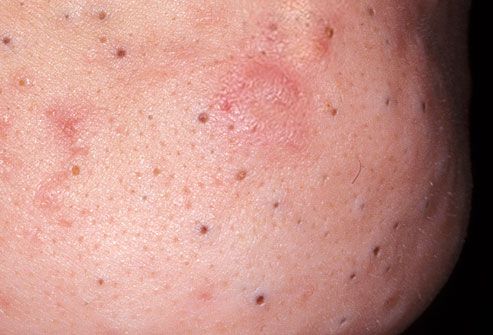
Blackheads are comedones that are open at the surface of the skin. They are filled with excess oil and dead skin cells. It's not dirt that causes the comedone to turn black. The oil's reaction to air causes the black color. Blackheads can frequently be treated with over-the-counter medications.
4. Whiteheads

Comedones that stay closed at the surface of the skin are called whiteheads. This happens when oil and skin cells prevent a clogged hair follicle from opening. Many of the same over-the-counter medicines that treat blackheads are also effective against whiteheads.
5. Papules
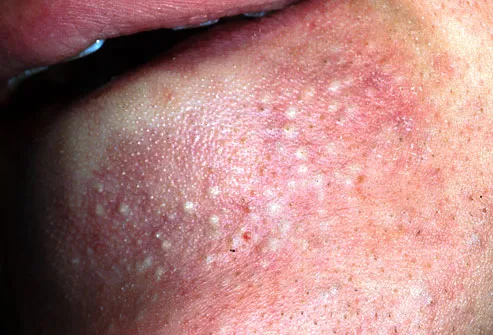
Papules are comedones that become inflamed, forming small red or pink bumps on the skin. This type of pimple may be sensitive to the touch. Picking or squeezing can make the inflammation worse and may lead to scarring. A large number of papules may indicate moderate to severe acne.
6. Pustules
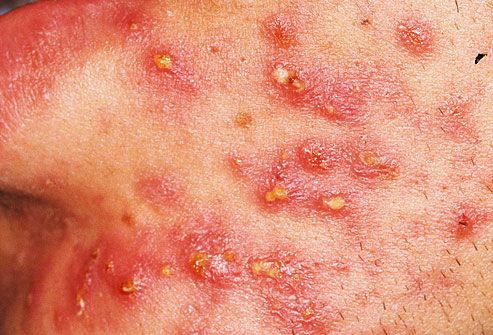
Pustules are another kind of inflamed pimple. They resemble a whitehead with a red ring around the bump. The bump is typically filled with white or yellow pus. Avoid picking or squeezing pustules. Picking can cause scars or dark spots to develop on the skin.
7.Nodules
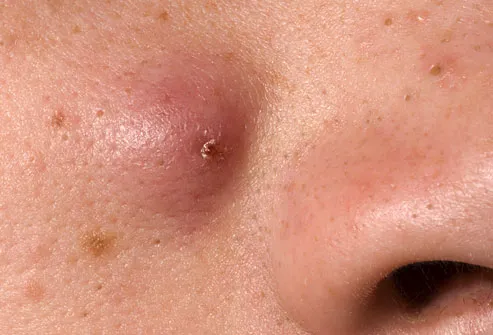
Nodules are large, inflamed bumps that feel firm to the touch. They develop deep within the skin and are often painful. Nodules should be treated by a dermatologist. Over-the-counter treatments may not be powerful enough to clear them up, but prescription drugs can be effective.
8.Cysts
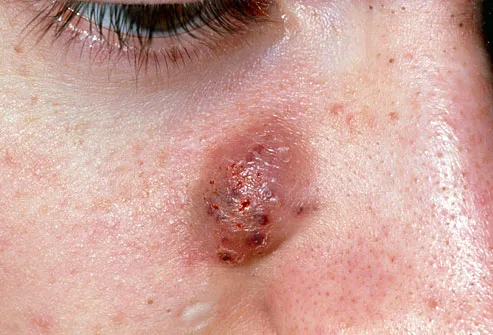
Cysts are large, pus-filled lesions that look similar to boils. Like nodules, cysts can be painful and should be treated by a dermatologist. People who develop nodules and cysts are usually considered to have a more severe form of acne.
9. Mild Acne
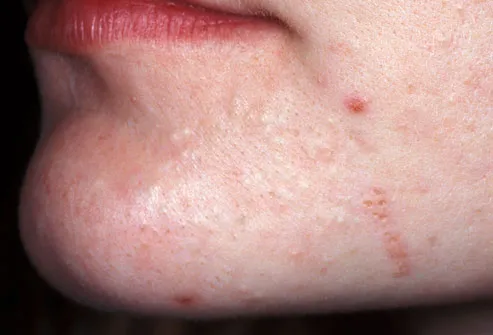
Acne falls into the "mild" category if you have fewer than 20 whiteheads or blackheads, fewer than 15 inflamed bumps, or fewer than 30 total lesions. Mild acne is usually treated with over-the-counter topical medicine. It may take up to eight weeks to see a significant improvement.
10. Moderate Acne
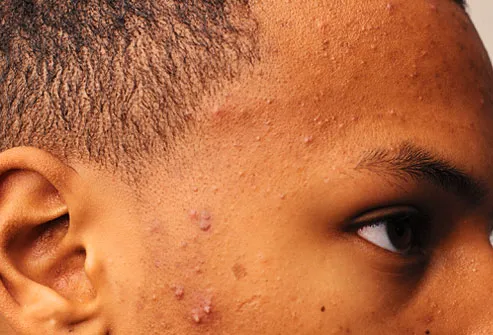
If you have 20 to 100 whiteheads or blackheads, 15 to 50 inflamed bumps, or 30 to 125 total lesions, your acne is considered moderate. Dermatologists usually recommend prescription medication for moderate to severe acne. It may take several weeks to notice an improvement, and your acne may appear to get worse before it gets better.
11. Severe Nodulocystic Acne
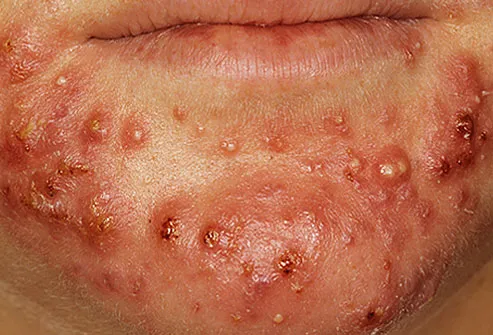
People with severe nodulocystic acne have multiple inflamed cysts and nodules. The acne may turn deep red or purple. It often leaves scars. Prompt treatment by a dermatologist can minimize scarring. In some cases, a doctor may inject corticosteroids directly into nodules and cysts to reduce the size and painful inflammation.
12. Acne Conglobata
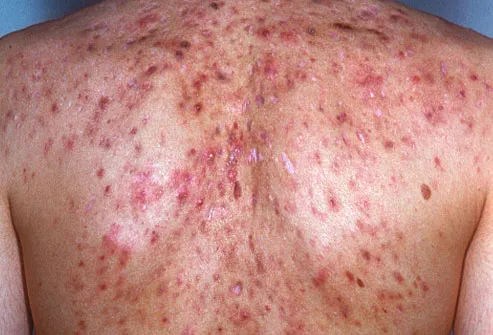
Acne conglobata is one of the most severe forms of acne. It involves many inflamed nodules that are connected under the skin to other nodules. It can affect the neck, chest, arms, and buttocks. It often leaves scars. This type of acne is more common in men and is sometimes caused by taking steroids or testosterone. Timely treatment by a dermatologist is essential.
13. Acne Mechanica
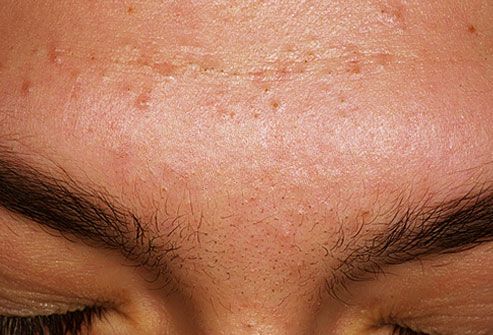
Acne mechanica is caused by heat, friction, and pressure against the skin, often the result of wearing sports gear such as a helmet or baseball cap. It is sometimes called "sports-induced acne" because it occurs frequently in athletes. Preventive measures include wearing an absorbent material under sports equipment and showering immediately after activity.
14. Topical Therapy
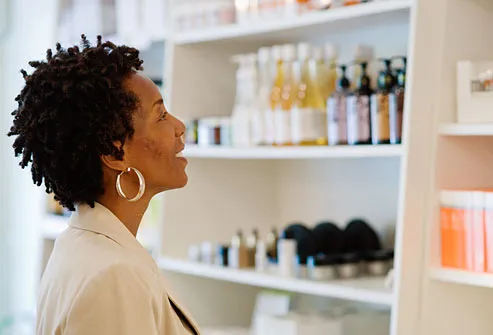
Topical therapy is acne medication that is applied directly to the skin, like gels or creams. Over-the-counter topical products can often help mild acne. They may contain ingredients like benzoyl peroxide, resorcinol, salicylic acid, or sulfur. Prescription products such as antimicrobial or retinoid creams can treat mild to moderately severe acne. These can be prescribed alone or in combination with other ingredients.
15. Systemic Therapy
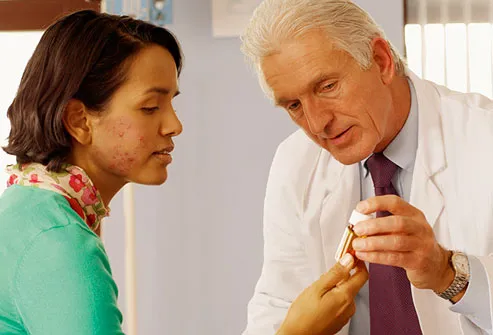
Systemic therapy refers to acne medication that is taken by mouth. Antibiotics like tetracycline, minocycline, doxycycline, or erythromycin may treat moderate to severe acne by targeting bacteria and reducing inflammation. Other systemic therapies include oral contraceptives, which can reduce acne in some women, spironolactone, an anti-androgen hormone pill, and isotretinoin (high-dose prescription vitamin A). Isotretinoin is used only in certain severe, cystic acne cases, or in cases where other treatments don't work. A course of isotretinoin treatment requires regular appointments with your dermatologist.
Source: http://www.webmd.com/








 The
effect of Bergamot Polyphenolic Fraction (500 and 1000 mg/daily) on
reactive vasodilatation in patients suffering from isolated
(HC) or mixed hyperlipidemia (HC/HT) and associated
hyperglycemia (HC/HT /HG).Bergamot Polyphenolic Fraction reduces
total and LDL cholesterol levels (an effect accompanied by
elevation of cHDL), triglyceride levels and by a significant
decrease in blood glucose. Moreover, it
inhibited HMG-CoA reductase activity and enhances reactive
vasodilation.
The
effect of Bergamot Polyphenolic Fraction (500 and 1000 mg/daily) on
reactive vasodilatation in patients suffering from isolated
(HC) or mixed hyperlipidemia (HC/HT) and associated
hyperglycemia (HC/HT /HG).Bergamot Polyphenolic Fraction reduces
total and LDL cholesterol levels (an effect accompanied by
elevation of cHDL), triglyceride levels and by a significant
decrease in blood glucose. Moreover, it
inhibited HMG-CoA reductase activity and enhances reactive
vasodilation.









